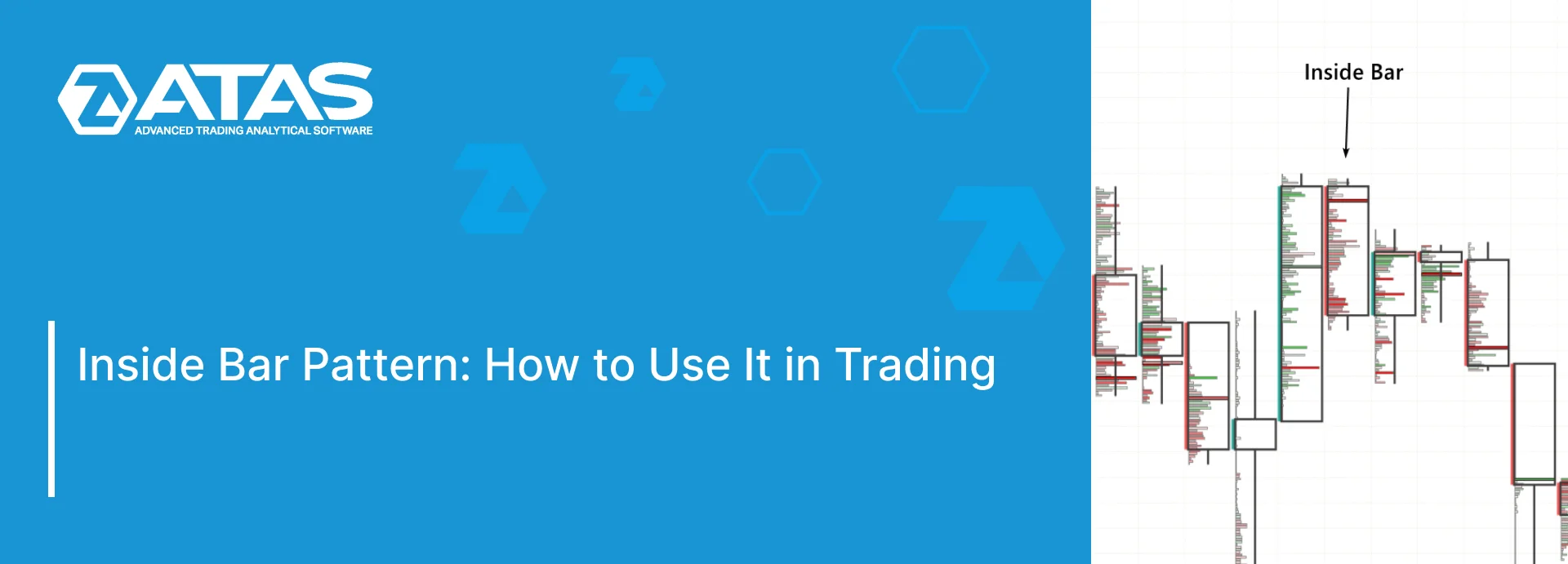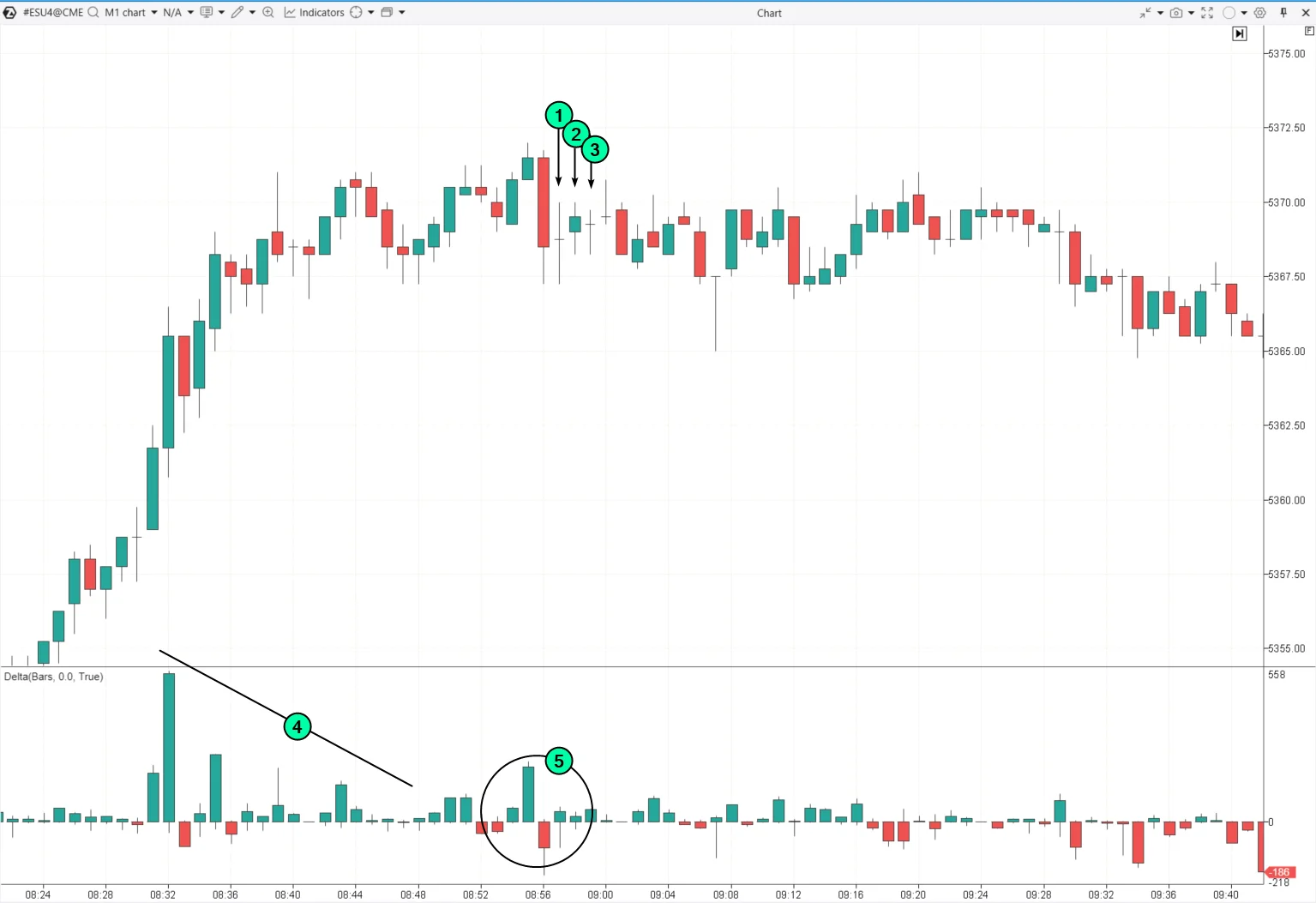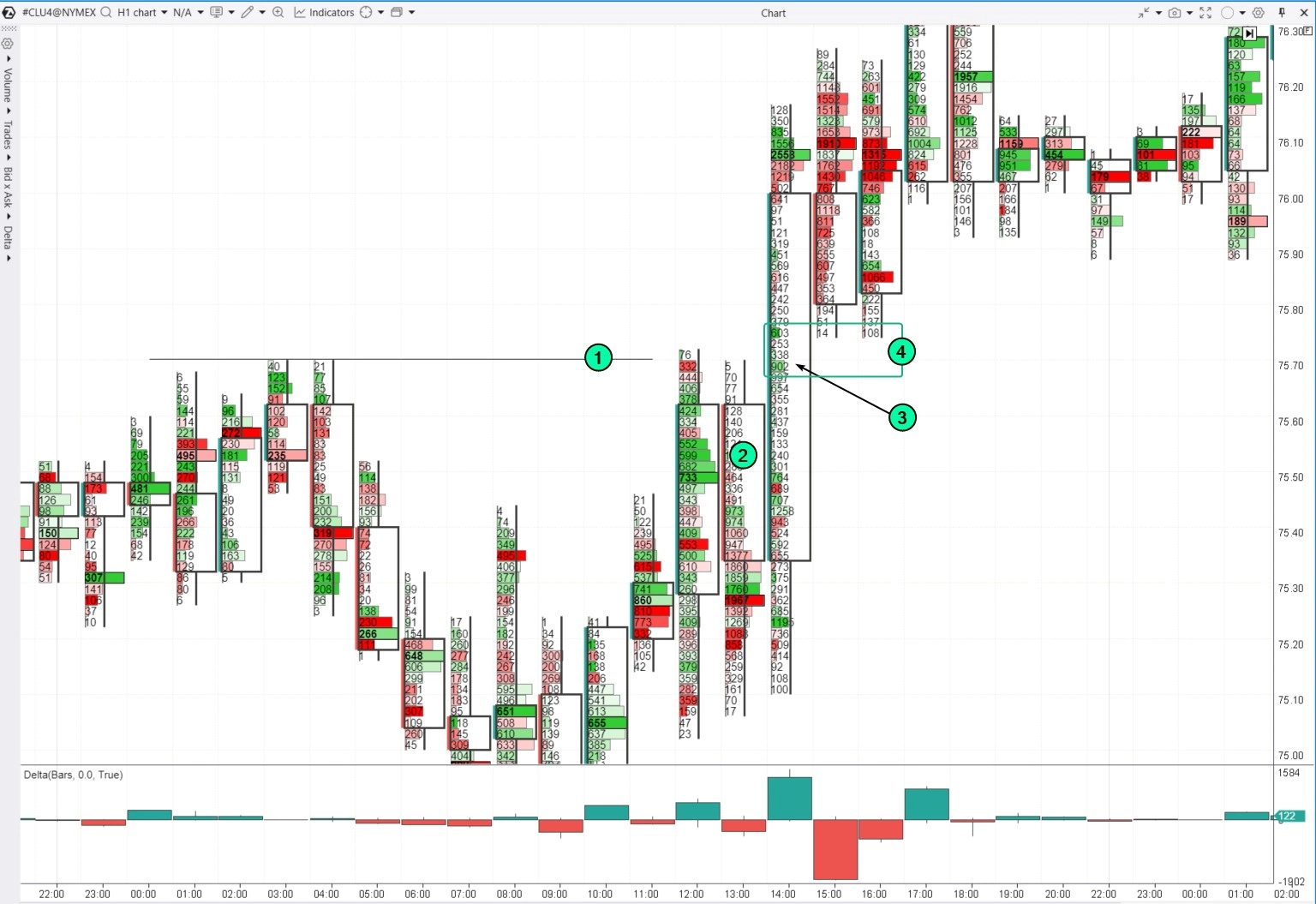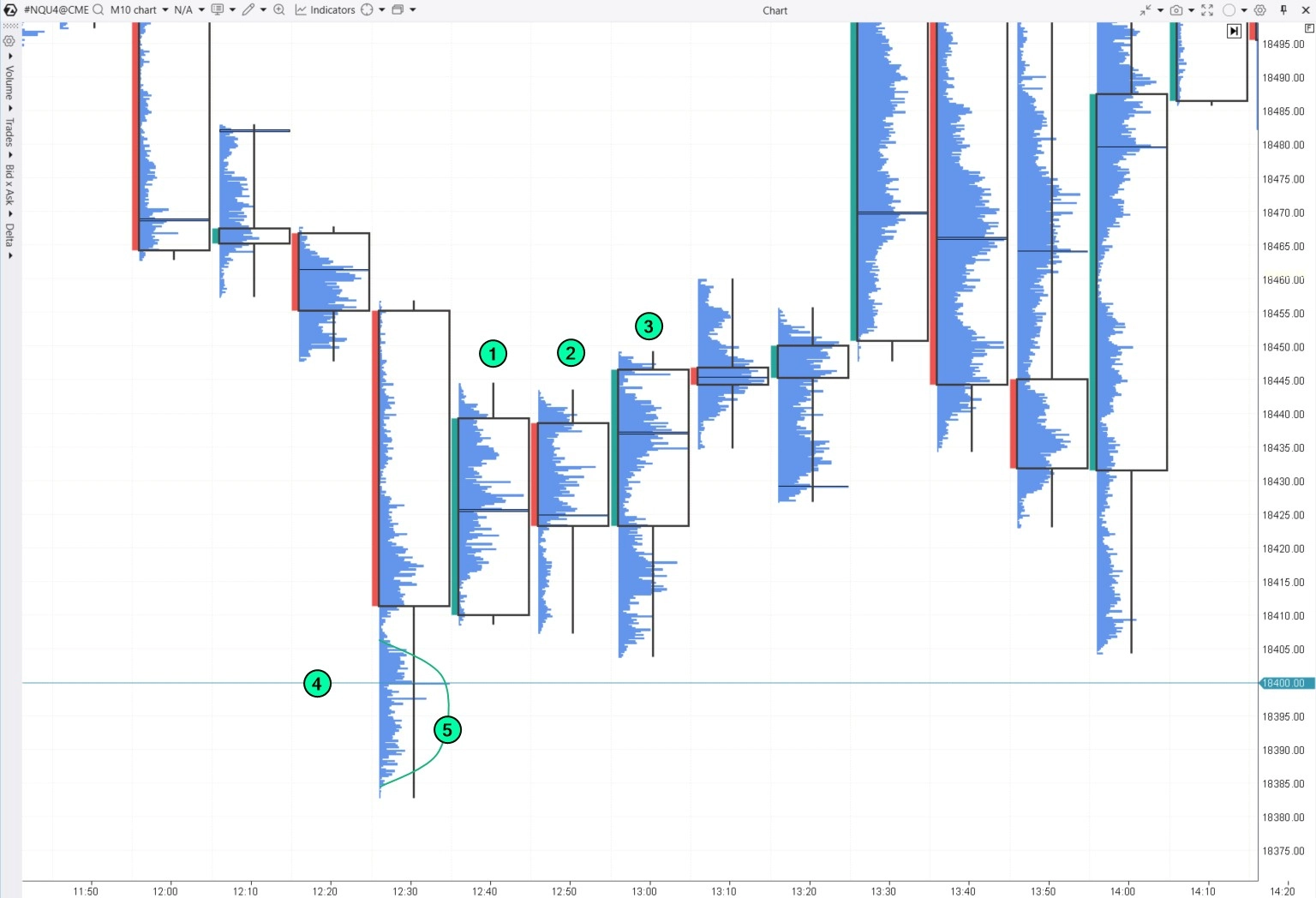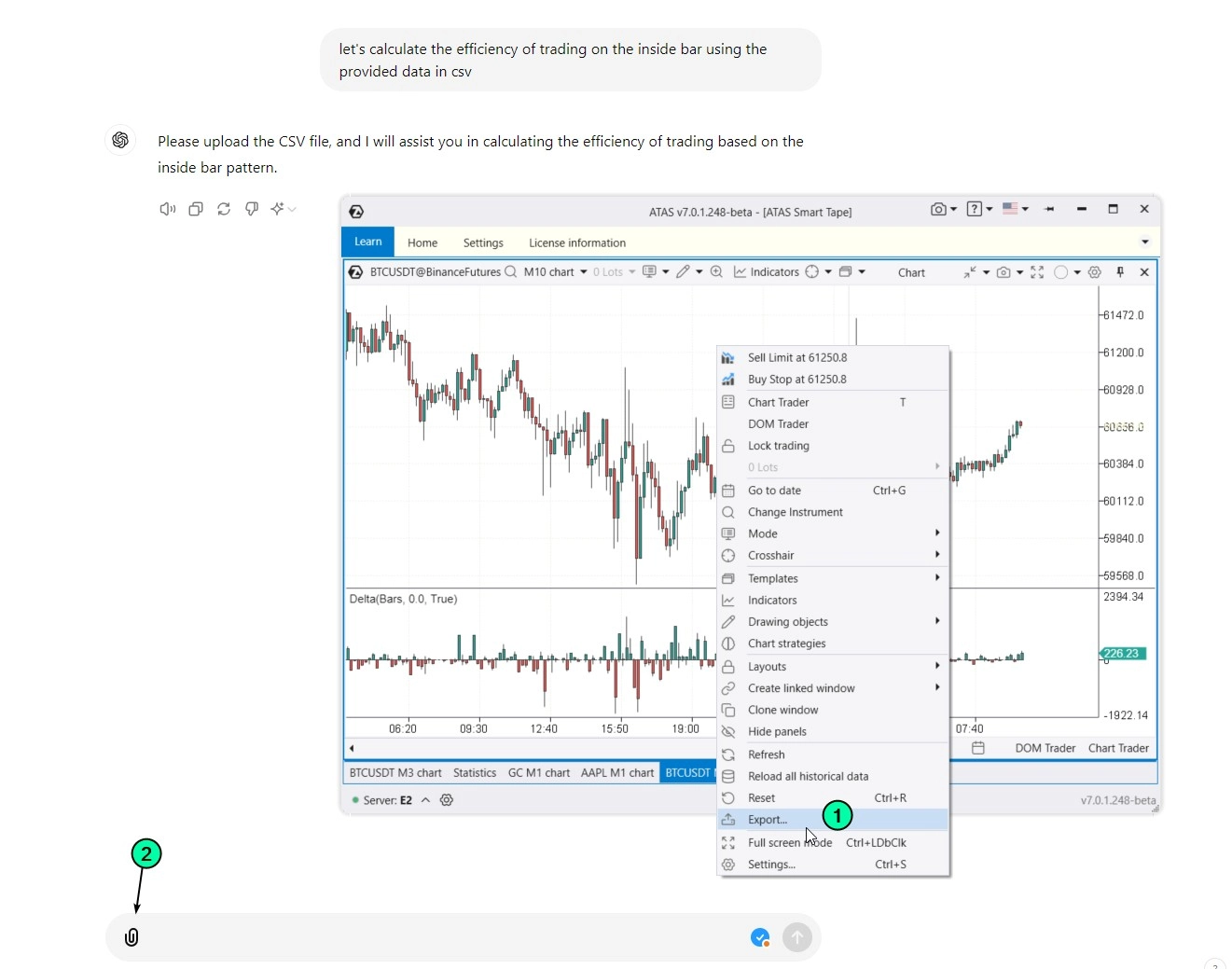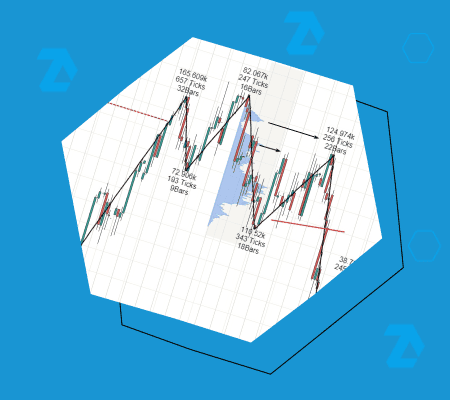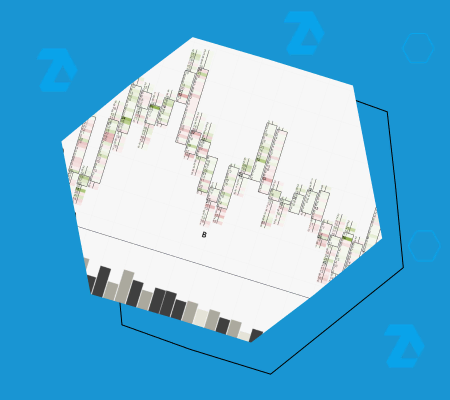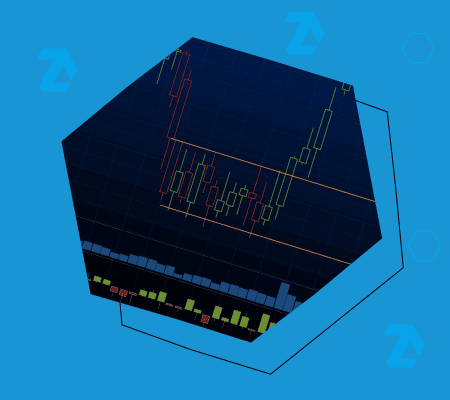1 — a strong buying effort is noticeable at the breakout of the 18,600 level, shown by a bright green cluster. After breaking through this level, the price increases sharply, which is reflected in the narrow profile. However, the momentum starts to slow down after surpassing 18,630, as indicated by a bulge in the profile around 18,636 (2).
A clear bearish signal emerges on the 08:40 candle. The combination of a bright green cluster at the top (3) and the closing price far from the high suggests a possible bull trap.
4 — an inside bar (4) forms next, offering a chance to enter a short position on the break of its low in the following candle, with a stop-loss placed above the inside bar, following classic trading rules.
5 — a bearish breakout of the previous candle’s low, which is an inside bar, is accompanied by bright red clusters on the footprint chart, indicating seller activity. However, despite appearing to be a legitimate bearish breakout, it turned out to be premature, as there was no spike in negative values on the Delta indicator.
6 — the price approached the upper boundary of the inside bar once more. At this point:
- there are still signs of a bull trap, with bright green clusters near the high and the closing price below them.
- fortunately, the price did not trigger the stop-loss set above the inside bar.
7 — clear signs of increased selling pressure. The Delta indicator shows a spike in negative values, and the candle closes below the bright red clusters. The red lines extending from these clusters indicate a resistance zone that proved effective later.
Entry points for a short position at the candle near the red lines (7) or on the break of the inside bar’s low (4) would be at roughly the same level. However, the second entry appears more well-supported due to the additional information from the footprint chart. This position would probably show positive PnL.

